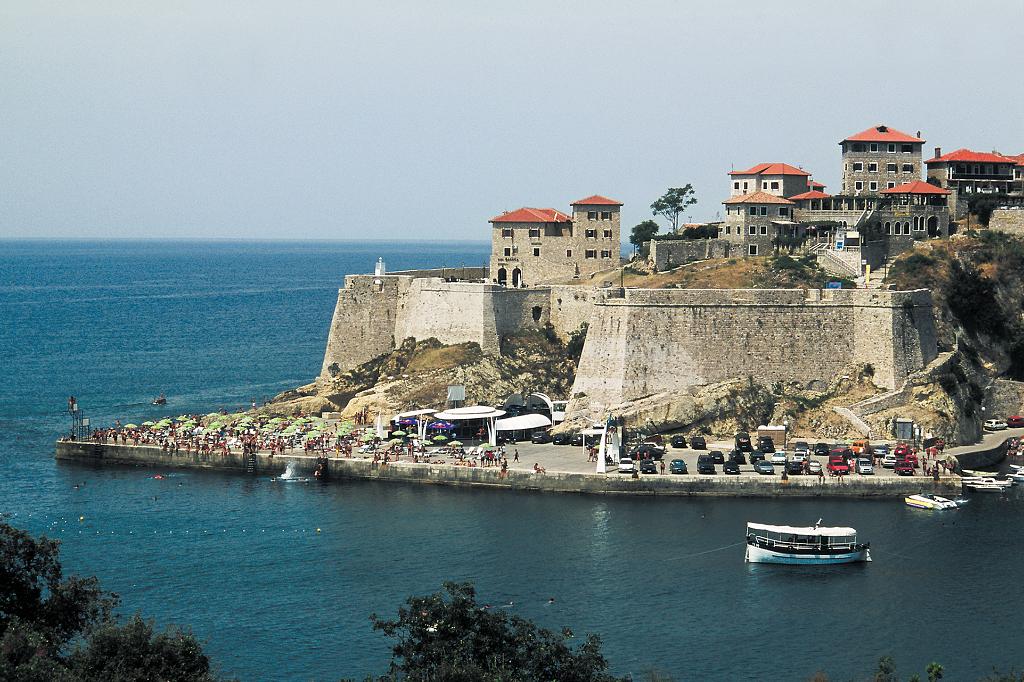Basic route info
NAME: Ulcinj route
ROUTE LENGHT:
PHYSICAL DEMAND:
GROUP SIZE:
LANGUAGE SPOKEN:
NAME: Ulcinj route
ROUTE LENGHT:
PHYSICAL DEMAND:
GROUP SIZE:
LANGUAGE SPOKEN:
The route begins at the Spring Water Fountain of Pečurice, an old stone water fountain built over 350 years ago. Across from the spring is a large olive orchard containing trees more than 1000 years old. Continue along and you will see to your right the Pečurice Mosque, first built in 1891 and rebuilt after the 1982 earthquake. This mosque is one of the most important cultural monuments of the region. Next, you will come to the Old Olive, the famous tree which dates back over 2000 years and which belongs to a local farmer. After viewing this natural wonder, which is one of the oldest scientifically registered trees in the world, you can take a break in the farmer’s house and sample a range of delights such as cheese, fritters, vegetables, fruits and, of course, his exquisite extra virgin olive oil. A few metres from the farmer’s house is a viewpoint from which you can see the Veliki Pijesak coast, the Utjeha coast, the village of Pečurice and parts of Old Ulcinj. A perfect place to rest after a delicious lunch! Cycle on or walk and end your journey at the Konoba Ribar restaurant in the hills. Enjoy the spectacular views while sampling fresh local seafood and wines.
The Church – Mosque (Old Town – Ulcinj) – During the rule of the Venetians the Church of St. Maria was built in the Old Town in 1510, which was turned into a mosque of the sultan Selim II as soon as the Turks conquered Ulcinj in 1571. It used to be the so-called carska džamija – imperial mosque, as it did not have any vakufs from which it could have been financed at the beginning, so that its employees were paid from the state budget.Hadzi Halil Skura added a minaret in 1693 made of nicely cut stone, in the lower part, on a rectangular base, which was made narrower on top. The religious purpose of this mosque ended in 1878, actually when the Montenegrins entered Ulcinj for the first time. This religious building also had a maktab (school). All the Ulcinj reises (captains) would gather there when an important decision had to be made. This building is the most beautiful monument incorporating a combination of the West and the East in the architecture of Ulcinj. It hosts the town museum.
 Old Town Ulcinj – The Old Town in Ulcinj is one of the oldest urban architectural complexes along the Adriatic Sea. In this enchanting dish resembling a stranded ship for 25 centuries life has been booming, civilizations have been exchanging leaving their vivid traces up to now.It is a unique opinion that the Old Town represents a cultural-historical monument of invaluable significance due to its Illyrian walls, its citadel, the street net, the markets and squares, some house blocks and some valuable architectural edifices, and especially due to its town landscape, silhouette and urban plaster. It has been built for 2.5 millenniums and during different economical, military and cultural conditions, thus the old town has got the characteristic of an organic complex. It is an antique town with picturesque middle-aged, narrow and curving streets, densely joined two-and- three-floor stone houses decorated by elements of the Renaissance and Baroque, and finally there is a series of valuable edifices from the Ottoman time.The oldest remnants of the walls date back to the Illyrian time. In the VI century the town got two gates: the lower (Eastern), which can be reached from the sea-side and the upper (Western), which can be reached from land.
Old Town Ulcinj – The Old Town in Ulcinj is one of the oldest urban architectural complexes along the Adriatic Sea. In this enchanting dish resembling a stranded ship for 25 centuries life has been booming, civilizations have been exchanging leaving their vivid traces up to now.It is a unique opinion that the Old Town represents a cultural-historical monument of invaluable significance due to its Illyrian walls, its citadel, the street net, the markets and squares, some house blocks and some valuable architectural edifices, and especially due to its town landscape, silhouette and urban plaster. It has been built for 2.5 millenniums and during different economical, military and cultural conditions, thus the old town has got the characteristic of an organic complex. It is an antique town with picturesque middle-aged, narrow and curving streets, densely joined two-and- three-floor stone houses decorated by elements of the Renaissance and Baroque, and finally there is a series of valuable edifices from the Ottoman time.The oldest remnants of the walls date back to the Illyrian time. In the VI century the town got two gates: the lower (Eastern), which can be reached from the sea-side and the upper (Western), which can be reached from land.
+382 69 039 143
+382 69 039 143
info@maslinaribar.org
Ulica 9. Januar BB Stari Bar, 85000 Bar, Montenegro
We are available every working day between 8AM and 4PM

